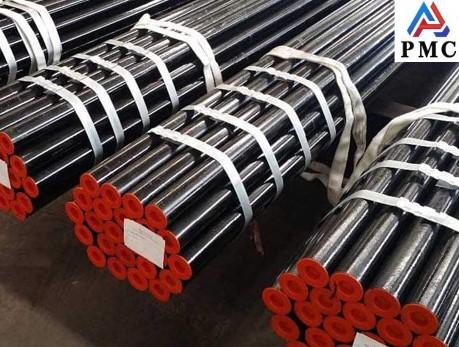
Strength Range of Seamless Steel Pipe
The strength of seamless steel pipe is a key performance indicator to measure its load-bearing capacity, which is crucial to ensure the safe and reliable operation of the pipeline system or structure. The strength of steel pipes is usually measured by two main parameters (yield strength and tensile strength). The factors affecting the strength of seamless steel pipes and the strength range of commonly used seamless steel pipes are carefully summarized below.
Two parameters to measure the strength of steel pipes
1. Yield strength
Definition: Yield strength refers to the minimum stress at which a steel pipe material undergoes permanent plastic deformation without further load increase when subjected to a tensile load. In short, it is the critical point at which the material changes from elastic deformation (returning to its original shape after the load is removed) to plastic deformation (still deforming after the load is removed).
Physical meaning: It represents the ability of steel pipes to avoid permanent deformation under normal working conditions. In engineering design, the allowable stress of pipelines or structures is usually set below the yield strength to ensure safety.
Symbols:
ReH: Upper yield strength, refers to the stress when the load first drops before yielding.
Rp0.2: Specifies the non-proportional extension strength. When the material has no obvious yield point, the stress at which 0.2% residual plastic deformation occurs is taken. This is the more commonly used and general method of expressing yield strength.
Units: Megapascals (MPa) or pounds per square inch (psi).
2. Tensile strength
Definition: Tensile strength refers to the maximum stress that a steel pipe material can withstand when subjected to a tensile load and reaches its maximum uniform deformation capacity. After reaching the tensile strength, the material begins to neck and eventually breaks.
Physical meaning: It represents the maximum load that the steel pipe can withstand before failure, and is the material's ability to resist fracture.
Units: Megapascals (MPa) or pounds per square inch (psi).

The main factors affecting the strength of seamless steel pipes
The strength of seamless steel pipe is not fixed, it is affected by a variety of factors:
Carbon content: Carbon content is the most important element affecting the strength of steel pipes. The higher the carbon content, the higher the strength and hardness of the steel, but the plasticity and toughness will decrease.
Alloying elements: Adding alloying elements such as manganese (Mn), silicon (Si), chromium (Cr), molybdenum (Mo), nickel (Ni), vanadium (V), niobium (Nb), and titanium (Ti) can significantly improve the strength of steel, especially its high-temperature strength and low-temperature toughness. For example, P91 and P92 steels used for high-pressure boiler tubes achieve high strength through complex alloying.
Manufacturing process:
Hot rolled: Hot rolled seamless steel pipes usually have moderate strength and good plasticity.
Cold drawing/cold rolling: Cold working will cause work hardening of steel, thereby increasing the yield strength and tensile strength of the steel pipe, but may cause a slight decrease in toughness. Precision seamless steel pipes are often cold worked to obtain high strength and high precision.
Heat treatment status: Heat treatment of steel pipes (such as annealing, normalizing, quenching, tempering, quenching and tempering, etc.) can significantly change their internal structure, thereby adjusting the balance of strength, hardness and toughness. For example, alloy steel pipes that have undergone quenching and tempering can obtain very high comprehensive strength.
Dimensions (wall thickness and diameter)
Under the same material, wall thickness is the direct factor affecting the pressure-bearing strength of steel pipes. The thicker the wall, the stronger the pressure-bearing capacity.
The outer diameter also affects the compressive strength, but it is mainly reflected by the ratio to the wall thickness (D/t).
Strength range of commonly used seamless steel pipes
API 5L / ASTM A106 / ASTM A53 (Line Pipe/Fluid Pipe):
API 5L Gr.B / ASTM A106 Gr.B: Yield strength approximately 245 MPa, tensile strength approximately 415 MPa.
API 5L X60: Yield strength is approximately 415 MPa and tensile strength is approximately 520 MPa.
ASTM A500 Grade C (structural pipe): Yield strength approximately 315 MPa (minimum), tensile strength approximately 425 MPa (minimum).
GB/T 5310 Seamless steel tubes for high-pressure boilers
12Cr1MoVG: Yield strength is about 295 MPa, tensile strength is about 490 MPa (room temperature). At high temperatures, its endurance strength and creep strength are more important considerations.
P91: The yield strength can reach 450 MPa, and the tensile strength can reach 620-850 MPa (at room temperature). It can still maintain extremely high strength at high temperatures.
Please note: The above data are typical or minimum requirements.
The specific values should be based on the technical requirements clearly specified in the national standards or industry standards actually implemented for steel pipes.
Read more: Seamless Steel Pipe Strength Calculation


